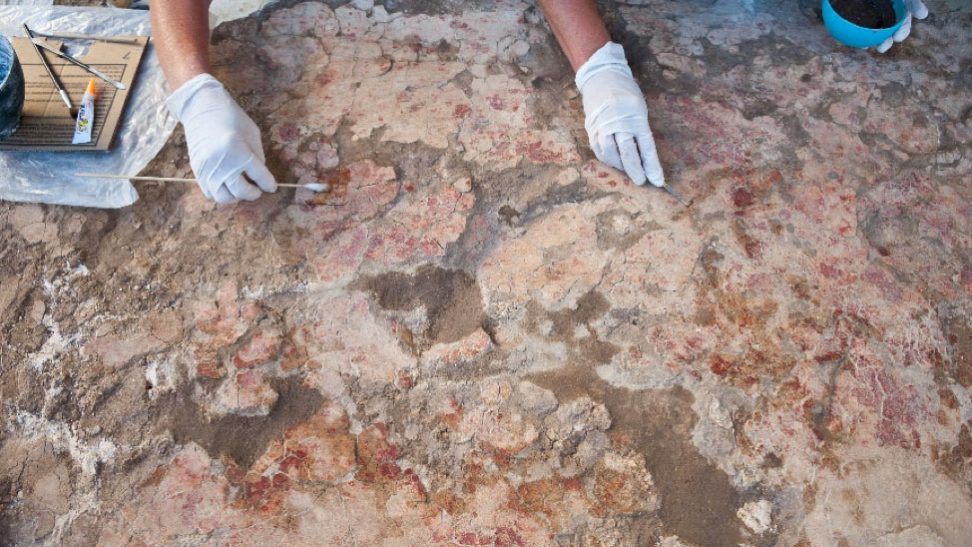
Heracleópolis Magna. Research project in Ehnasya El Medina, Egypt
Heracleópolis Magna was the first site excavated by Spaniards in Egyptian territory, started in 1966 by Martín Almagro and continued until the present day under the direction of M. Carmen Pérez Die, in collaboration with the Egyptian Antiquities Service of Beni Suef.
In the city of Heracleópolis are present all the chronological periods of ancient Egypt. The Spanish excavations, in collaboration with those carried out by the Egyptians at the site, are not limited only to a temple or necropolis, but there is the possibility of studying the city in a holistic way, relating all the monuments to each other and reaching conclusions and news of great relevance and importance for the history of the country of the Nile.

Period
From the First Intermediate Period to the Byzantine and Coptic periods
Institution
Asoc. Cooperación y Protección del Patrimonio Histórico Artístico y Arqueológico Internacional (ACOPHIA) / Museo Arqueológico Nacional, Madrid. Department of Egyptian and Near Eastern Antiquities
Web and social networks
http://heracleopolismagna.com/
https://www.facebook.com/groups/heracleopolismagna
Principal Investigator(s)
Dr. M. Carmen Pérez-Die
Curator- Head of the Department of Egyptian and Near Eastern Antiquities of the Museo Arqueológico Nacional, Madrid
Location
Heracleópolis Magna, 130 km. south of Cairo, in the current province of Beni Suef, very close to the entrance of El Fayum Oasis.
LOCATION
RESULTS
The results obtained in the different campaigns of excavation have been of great historical importance, taking into account that Heracleópolis Magna was one of the most important cities of ancient Egypt and that, until the works of the Spaniards, it was completely unknown.
- Excavations in the necropolis of the First Intermediate Period/ Beginning of the Middle Kingdom (Dynasty IX-XI, around 2160-2040 B.C.), belonging to the time when Heracleópolis was the capital of Egypt with the royal court installed there during the IX and X Dynasties. A cemetery from the first Intermediate Period/ beginning of the Middle Kingdom has been found where high local dignitaries were buried. The tombs, with stone and adobe chambers, preserve the False Door with the names and titles of the deceased and in front of it a Table of Offerings. Some chambers are painted with funeral themes, with the scene of the funeral meal, the contribution of the offerings to the table of the deceased and the ceremonies carried out by the priests. One of the greatest contributions to the history of the period has been the geological studies that confirm a climatic change, due to torrential rains that could have caused the fall of the Ancient Kingdom, a fact denied until now by many Egyptologists.
- Excavations in the Necropolis of the Third Intermediate Period/Early Saite Period. This necropolis housed the local leaders of the XXIInd Dynasty (850-750 B.C.) who were buried with very rich trousseaus, such as canopic vessels, inscribed fayenza ushebtis, ceramic and alabaster vessels, heart scarabs and necklaces. These governors accumulated the military and civil religious positions during that period, being Chiefs of the Army and First Priests of the god Heryshef. From the XXV Dynasty (around 750 B.C.) this necropolis was reused by the local population, having found more than 1,000 individuals. The anthropological studies have allowed to know essential aspects of the population like the age, the sex, the pathologies, the race, and has provided very novel data to near Egyptian men and women of old time.
- The Temple of Heryshef discovered by Naville at the end of the 19th century, and now excavated by the Spanish Mission as an essential part of the Project, has allowed us to know the main rooms of the sacred enclosure: entrance, open courtyard, pylon, peristyle courtyard, portico, hypostyle room, sanctuary and other rooms located to the north of the building. The Temple could have been built by Thutmose III (pylon, hypostyle room) and modified and enlarged enormously by Ramses II (the peristyle courtyard above the levels of Thutmose III, or the portico). The discovery of two lintels with the royal cartouches of Sesostris II, coming from his funerary temple in the pyramid of Lahun, shows that many ancient stones were reused in the construction of the Temple of Heryshef. In the Greek-Roman period the activity was very intense and many of the remains preserved today are from this period. An open-air museum is being built with the main findings, so that it can be visited by those interested.
- Project for the Recovery and transfer of the Hotep-Uadjt Tomb to a new Museum in Cairo
In 2019, the project to recover and move the Hotep-Uadjyt tomb to a new museum in Cairo began, due to the deterioration that was occurring there. With the permission of the Egyptian authorities, the walls with paintings have been removed and in the next campaigns they will be restored and moved to the Museum that the authorities determine.
PICTURES
- Oldest Human Fingerprint in the World Discovered in Spain, Left by Neanderthals 43,000 Years Ago (La Brújula Verde 26/05/2025) - 27 May, 2025
- Precise Timeline Reconstructed for When Denisovans, Neanderthals, and Homo sapiens Inhabited Denisova Cave Over 300,000 Years (La Brújula Verde 26/05/2025) - 27 May, 2025
- Mysterious Syrian artifacts reidentified as ancient baby rattles (Phys.org 26/05/2025) - 27 May, 2025

























